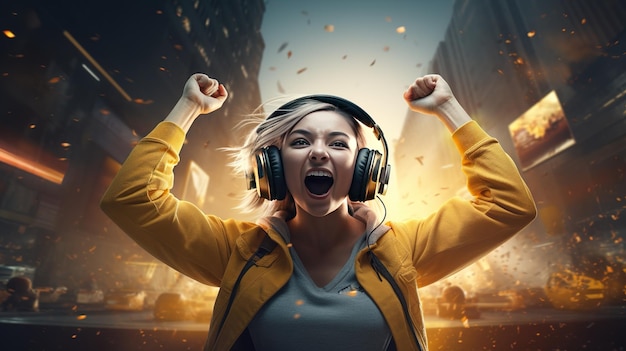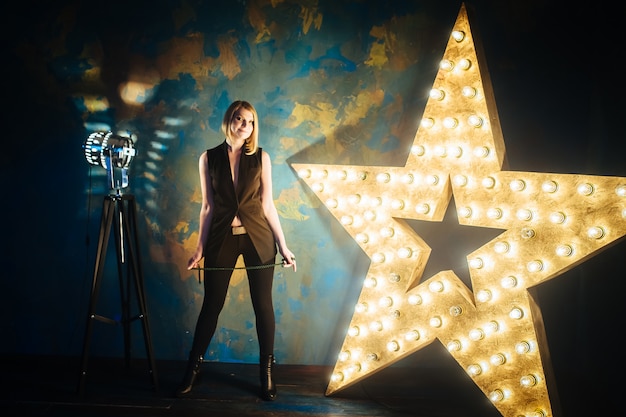Level Up Your Gaming Experience:
As a music enthusiast and gamer, you might be wondering how to
Custom Game Soundtracks:
One of the most obvious ways to incorporate music into your gaming experience is by creating custom soundtracks. Choose songs that resonate with you and the game’s atmosphere, and create a playlist that will elevate your gaming sessions. You can easily do this by using media players or streaming services while you game.
In-Game Music:
Many games come with their own in-game music, which can often be overlooked. Explore the game’s soundtrack, and listen to how the music changes depending on the situation in the game. In some cases, the game’s original score can be just as memorable as the game itself!
Streaming Services:
Consider subscribing to a
Synced Light Shows:
For the ultimate music and gaming experience, invest in a synced light show system like the Philips Hue or Logitech Lightsync. These systems can synchronize lights with your music and in-game events, creating an immersive environment that will transport you into the game.
5. Virtual Reality:
Finally, for the ultimate music and gaming experience, consider investing in virtual reality (VR) technology. VR headsets like the Oculus Rift or HTC Vive offer a fully immersive experience, allowing you to interact with your games in a whole new way. Add music into the mix, and you’ll feel like you’re truly part of the game world.
Remember, music is a powerful tool that can enhance any experience, and gaming is no exception. By incorporating these methods into your gaming routine, you’ll be able to level up your gaming experience like never before!

The Growing Trend of Music and Gaming Communities
In today’s digitally connected world, the lines between various forms of entertainment continue to blur. One such fascinating intersection is the growing trend of music and gaming communities coming together. Music plays a crucial role in games, from setting the mood to immersing players deeper into the experience.
Why Music Matters in Gaming
Music’s importance in gaming cannot be overstated. It contributes to the overall ambiance, creates a sense of tension or excitement during critical moments, and can even help players focus by providing a soothing background. For instance, games like Red Dead Redemption 2 and The Witcher 3: Wild Hunt are renowned for their richly composed soundtracks, which significantly enhance the players’ immersion in these expansive open-world titles.
Top Ways for Music Enthusiasts to Enhance Their Favorite Games with Music
This article aims to provide music enthusiasts with top ways to enhance their favorite games through the power of music. We’ll explore various methods, from creating custom playlists for specific genres and moods to using in-game soundtracks and even integrating external music sources into your gaming experience. By the end of this article, you’ll have a solid understanding of how to make your favorite games even more enjoyable with the help of music.
Syncing Music with Games Using Media Players
Media players have become an essential part of our digital lives, enabling us to manage and play various media files. In the context of gaming, they can be used to sync music for an immersive experience. Three popular media players are:
Description of Media Players and Their Use for Syncing Music with Games
iTunes
Apple’s iTunes, a versatile media player, allows users to manage their entire music library. Its syncing feature can be used to transfer playlists to gaming consoles or PCs for use during gameplay.
Windows Media Player
Microsoft’s Windows Media Player offers similar functionalities, including the ability to create custom playlists and sync them with supported gaming platforms.
VLC Media Player
An open-source and versatile media player, VLC, can also be used to sync music with games. Though the process may require additional steps due to its open nature, it offers flexibility and broad compatibility.
Instructions on How to Sync Music with Popular Gaming Platforms
Xbox One
To sync music with Xbox One, follow these steps:
Transfer your playlist to an external hard drive or USB flash drive.
Connect the device to your Xbox One and navigate to “My Games & Apps”.
Highlight the music folder, press the Menu button, and select “Copy to Xbox One”.
Go back to “My Games & Apps”, and you should now see your music playlist.
PlayStation 4
To sync music with PlayStation 4, use a USB flash drive:
Transfer your playlist to the USB flash drive on your computer.
Connect the USB flash drive to your PlayStation 4.
Go to “Settings” > “System Settings” > “Music Playback”.
Select the USB drive, and your music should now be accessible during gameplay.
Nintendo Switch
Nintendo Switch supports microSD cards, allowing you to sync music as follows:
Transfer your playlist to a microSD card using a computer.
Insert the microSD card into your Nintendo Switch.
Go to “System Settings” > “System” > “Formats” > “MicroSD Card”.
Your music should now be accessible during gameplay.
PC Games
Syncing music with PC games is typically a more straightforward process, as most games support the use of media players for background music. Simply open your chosen media player and create a custom playlist for your gaming sessions.
Tips for Creating Custom Playlists and Optimizing the Gaming Experience with Music
Choose music that fits the game’s genre or atmosphere to enhance immersion.
Create separate playlists for different games or gaming moods to easily switch between them.
Ensure the volume levels of both your game and media player are balanced to avoid distracting volume fluctuations.
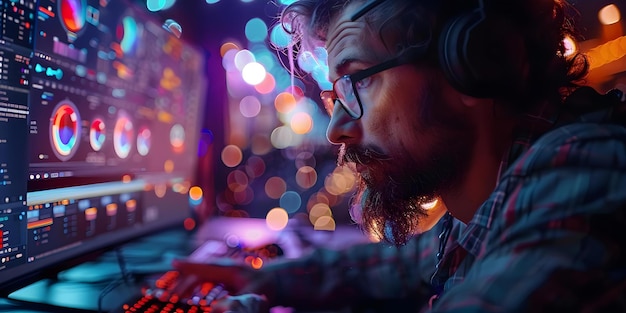
I In-Game Music Options
Description of in-game music options varies depending on the genres and gaming platforms. Here are some examples:
Role-Playing Games (RPGs)
RPGs often feature extensive music scores that adapt to the player’s actions and environments. Players can customize their listening experience by selecting different themes for various situations or areas. For instance, an epic battle theme might play during a boss fight, while a calmer melody could accompany exploration or dialogue scenes.
First-Person Shooter (FPS) games
In contrast, FPS games generally have less intrusive music, if any at all. The sound design in these games tends to focus on weapon sounds and environmental effects to create tension and immerse players in the action.
Strategy games
Strategy games often have dynamic music that adapts based on the player’s progress and actions. A quiet, contemplative melody might play during peaceful moments when resources are being managed, while a more intense theme could accompany battle scenes or critical decisions.
Racing games
Racing games often feature high-energy music to pump up players and match the fast-paced action on screen. Tracks can be customized, allowing players to listen to their favorite songs while racing.
In-game music can significantly enhance the gaming experience and create immersion by setting the mood, emphasizing critical moments, and providing a sense of familiarity or nostalgia. A well-crafted soundtrack can draw players deeper into the game world and make the experience more enjoyable.
Tips for discovering and utilizing in-game music options effectively include: exploring the game’s settings menu, paying attention to in-game menus or pause screens, and experimenting with different themes or tracks during gameplay. Additionally, some games offer the ability to create custom playlists or import personal music collections, allowing players to tailor their gaming experience even further.
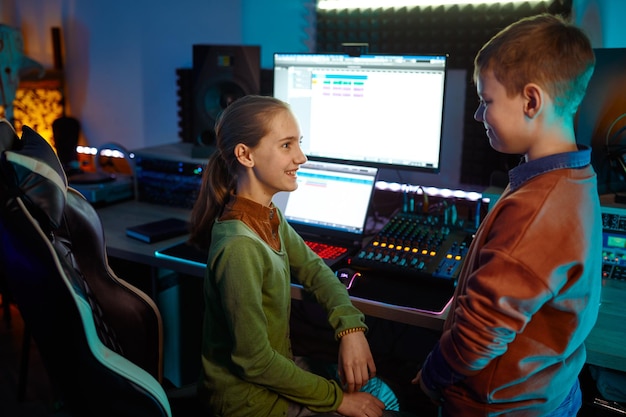
Custom Soundtracks Using MIDI Files
MIDI files, or Musical Instrument Digital Interface files, are a type of digital file format used for creating and editing musical compositions. MIDI is not a sound file format itself but rather a protocol that allows digital instruments, computers, and other devices to communicate with each other and produce music.
Definition and History
MIDI files contain instructions for how notes should be played, including pitch, duration, volume, and other musical parameters. They were first introduced in the late 1980s and quickly gained popularity among musicians and composers due to their flexibility and compact size.
Advantages over Other File Formats
Compared to other file formats like WAV or MP3, MIDI files have several advantages when it comes to custom gaming soundtracks:
- Size: MIDI files are much smaller than audio files because they don’t contain the actual sound data but only the instructions for creating the sounds.
- Flexibility: MIDI files can be easily edited using a MIDI editor or even some text editors, allowing users to change various aspects of the music in real-time.
- Compatibility: MIDI files can be played back on a wide range of devices, from synthesizers and drum machines to computers and gaming consoles.
Explanation of MIDI files and their role in gaming music
Instructions for creating custom soundtracks using MIDI files in popular gaming platforms:
PC games
To create custom soundtracks using MIDI files on PC games, follow these steps:
- Install a MIDI player or editor that supports your game’s file format.
- Create or import your MIDI file using the editor or another tool.
- Export the MIDI file in a format that your game supports. Some games may require specific formats or modifications to the file.
- Replace the original soundtrack file in your game folder with the new MIDI file.
- Test the game to ensure that the custom soundtrack is working properly.
Xbox One
Creating custom soundtracks using MIDI files on Xbox One can be a bit more complex:
- Convert your MIDI file to a WAV or MP3 format using a suitable converter.
- Transfer the audio file to an external hard drive or USB flash drive.
- Insert the storage device into your Xbox One and navigate to the “My Games & Apps” section.
- Highlight the game for which you want to change the soundtrack and press the Menu button on your controller.
- Select “Settings,” then “General,” and choose “Background Music.”
- Select the option to play custom background music and navigate to the location of your audio file on the external storage device.
PlayStation 4
Creating custom soundtracks using MIDI files on PlayStation 4 involves the following steps:
- Convert your MIDI file to a WAV or MP3 format using a suitable converter.
- Transfer the audio file to a USB flash drive.
- Insert the USB flash drive into your PlayStation 4 and navigate to the “Music” section in the “Settings” menu.
- Select “Saved Data Upload/Save Data Utility” and choose the option to upload a custom background theme.
- Create a new background theme using your converted audio file as the music track.
Tips for creating custom soundtracks that fit specific gaming genres and situations
When creating custom soundtracks using MIDI files, consider the following tips to ensure that they fit specific gaming genres and situations:
- Choose appropriate instruments and sounds for the genre: For example, use orchestral instruments for fantasy games, electronic music for sci-fi games, or acoustic guitar for adventure games.
- Create a consistent tempo and rhythm: The music should match the pace of the game, with faster-paced music for action games and slower-paced music for puzzle or strategy games.
- Use dynamic volume levels: The music should swell and recede based on the action in the game, creating a more immersive experience.
- Add sound effects and ambient noises: Incorporate sounds that fit the game world, such as raindrops, thunder, or explosions.
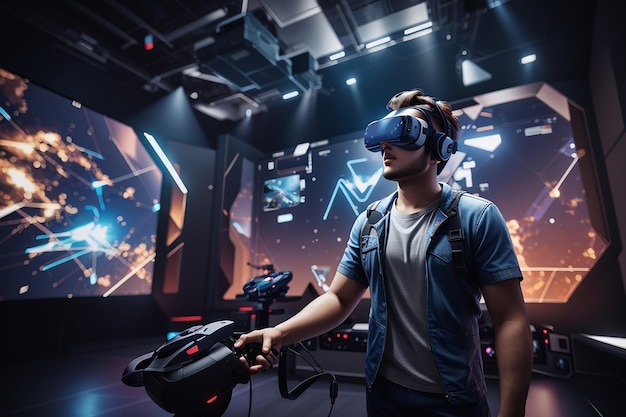
V. Virtual Reality (VR) Music Experiences
Virtual Reality (VR) music experiences in gaming have emerged as a growing trend, providing players with new levels of immersion and engagement. The fusion of music and VR technology transports gamers to unique musical landscapes, allowing them to engage with their favorite tunes in an entirely new way.
Description of the growing trend of VR music experiences in gaming
Enhancing Music Immerison: With VR headsets like Oculus Rift and HTC Vive, music isn’t just an audio backdrop anymore. Instead, it becomes a multi-sensory experience that can be felt as much as heard. VR music experiences offer spatial audio and 360-degree visuals, allowing players to feel like they’re inside their favorite songs.
Popular VR games with music features
- link: A rhythm-based game that lets you slash blocks in time with the beat of the music using controllers. The game offers a wide range of songs and supports custom music.
- link: In this game, players duck and weave to deflect bullets that are synced with the rhythm of the music. The experience is further enhanced by 3D visuals, making it a truly immersive musical journey.
Instructions on setting up a VR music experience
Oculus Rift:
First, ensure your Oculus Rift headset and controllers are fully charged. Install the required software, such as Oculus Home or Assetto Corsa with VR support. Next, connect your headset and controllers to your computer and launch the desired game or application.
HTC Vive:
Before starting, make sure your HTC Vive headset and controllers are updated to the latest software. Connect both components to your computer using HDMI and USB cables. Launch SteamVR, then start the desired music application or game within the VR environment.
VI. Conclusion
As we reach the end of our exploration into the world of gaming and music, it’s clear that this dynamic duo can create an unforgettable experience for gamers. In this conclusion, we will recap the top ways to enhance your gaming experience through music and encourage you, dear music enthusiast, to experiment with these methods.
Top Ways to Enhance Gaming Experience through Music
- Syncing media players: Integrating your favorite music with your gameplay can set the perfect mood for your gaming session. Most modern games support background music, and syncing your media player is a simple process.
- Utilizing in-game music options: Many games come with their own original soundtracks, and exploring these options can greatly enhance the overall gaming experience. Paying attention to in-game music can also reveal hidden narrative elements.
- Creating custom soundtracks with MIDI files: For those who want more control over their gaming soundtrack, creating custom soundtracks using MIDI files is a popular choice. This method requires some technical knowledge but offers endless possibilities.
- Exploring VR music experiences: Virtual Reality gaming takes immersion to a whole new level, and incorporating music into the VR experience can transport you to another world.
Encouragement for Music Enthusiasts
We encourage all music enthusiasts to experiment with these methods and share their results with the gaming community. Discovering new ways to incorporate music into your gaming experience can lead to a more engaging, enjoyable experience for both casual and dedicated gamers. Sharing your findings with others can also lead to exciting discussions and collaborations within the gaming community.
Final Thoughts
Incorporating music into gaming can transform the way we play and engage with games. Whether it’s setting the mood, revealing hidden narrative elements, or simply providing an enjoyable soundtrack to your gaming session, music plays a crucial role in enhancing the overall experience. So next time you sit down to play your favorite game, don’t forget to press play on your music player and let the magic begin!

